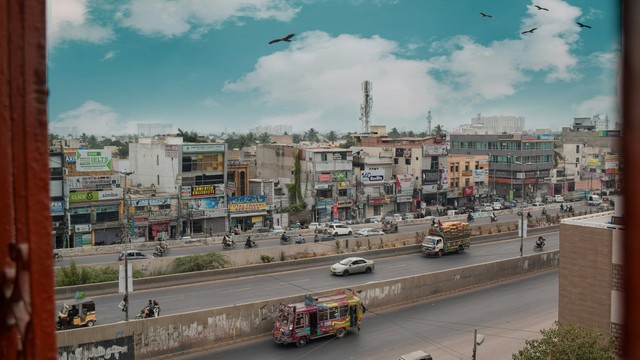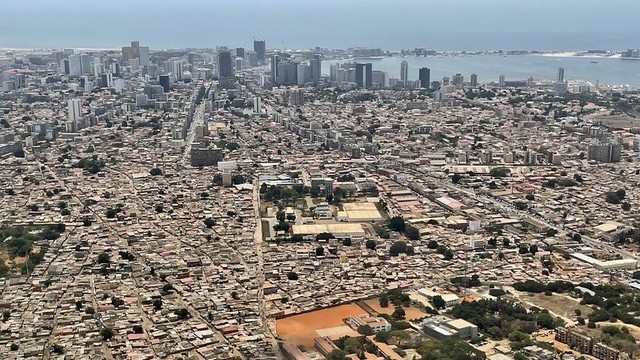Abandoned no more: Mumbai's new park on previously disused land
The importance of local parks, especially for those living in overcrowded dwellings and with no access to open space, is underplayed. Our bloggers describe how disused land was transformed into a well-used community park.


A vibrant Sunday morning at S B Somani Park, Mumbai (Photo: copyright Plural)
In Mumbai, land for development is at a premium, comprising flat, large, uniformly shaped parcels above sea level. This skews priorities, as open spaces with irregular boundaries or topography get neglected, despite demand. Coastal areas in particular fall prey, deemed unbuildable and left to degrade. The template of engagement (TOE) initiative flips the script – putting people before place.
According to our recent research, Mumbai's planned open public space per capita is among the lowest globally, with only 1.24m2/person, compared to 20m2 in London or New York, and 4m2 in Hong Kong.
Along its 149km coastline, only around 10% (16km) is accessible through beaches and promenades, while the remaining 130km comprises mangroves, fishing villages, inaccessible port and defence land, neglected areas and encroachments. Barbed wire, debris and waste have created ‘no-go’ zones, severing Mumbai's historic connection to the sea.
Collaborative efforts among stakeholders, including local communities, civil society, developers, visionaries and municipal authorities are essential to transform the entire coastline into sustainable public spaces, coupled with ecological restoration in sensitive areas. The objective is to unite these fragmented sections into a cohesive, vibrant whole.
More than just a park
One such collaborative revitalisation effort can be seen at S B Somani Park, a new public park carved out of a formerly derelict 6,000m2 open space in Mumbai's upmarket Cuffe Parade neighbourhood. Despite being designated as a public recreation area in the city's development plan for decades, the site had fallen into abject neglect and disuse.
Hemmed in awkwardly between the iconic World Trade Center complex on one side and a half-finished, abandoned private construction site on the other, this neglected space became a security hazard. With direct access from the Arabian Sea, antisocial elements came ashore and used the space for illegal activities.
More importantly, the unused area was situated next to a slum community that lacked access to safe public gathering spaces, especially for women and children.
Taking the community with you
In 2016 a team of urban designers tackled the challenge, collaborating with the locally-elected councillor for support. The resulting S B Somani Park is now an inclusive community asset with amenities including a sea-facing amphitheatre, fitness stations, playground and a dog park, catering to diverse residents.
With sustainability at its heart, the design incorporates natural materials and on-site composting to manage organic waste.
Unlike top-down development, S B Somani Park emerged through extensive bottom-up community engagement. Surveys, focus groups and design workshops involved nearby residents in shaping park plans, reflecting a desire for inclusive spaces. Their active involvement fostered a sense of community ownership even before the park was built.
After opening in 2019, the park has relied on continued community participation to maintain and manage the space through their voluntary efforts. Residents associations and young people run festivals and fairs, and other residents, with support from the councillor, organise free fitness activities and music concerts in the amphitheatre. This participatory approach has been critical to the park's success and sustainability.
The revived open space has also created economic opportunities for underprivileged youth and women in the area. The park employs local people to run the composting system and help with the Sunday festivals, enabling them to earn a livelihood. Through experiential learning programmes, children, teenagers and women from the informal settlement are acquiring new skills in public speaking and group performance that boost their confidence.
S B Somani Park’s multi-faceted impact demonstrates the wider potential of rejuvenating public spaces to uplift communities.
Scaling up through systems change
The successful transformation of the park from unused eyesore to vibrant public space did not happen overnight. It required years of relationship building, advocacy, planning and collaborative effort focused on this single, neglected parcel of land. The question remained – how could this participatory placemaking process be replicated to revive other overlooked open spaces across Mumbai?
To enable this scale up, the urban designers have distilled their learnings into a template of engagement (TOE) that provides a model framework for rejuvenating public open spaces across Mumbai's 227 electoral wards, with a special focus on coastal edges.
The TOE facilitates collaboration between key stakeholders – citizens, NGOs, urban designers, municipal officials and key representatives from the business sector – to jointly envision, design, fund and manage public space projects.
It outlines a step-by-step process to identify underutilised open space, conduct community needs assessments, co-create design solutions, leverage public and private resources, and foster local ownership of these community assets.
By developing an approach that blends top-down support with bottom-up participation, the TOE has the potential to replicate S B Somani Park’s success across the city.
Reclaiming the city’s shoreline
Mumbai is undergoing rapid development, putting pressure on already scarce open spaces. Less than 2.5% of the city area is planned open space for public use. Encroachment along the coastline has disrupted the relationship between the city and the sea.
Reclaiming and restoring public access along the seafront through the creation of inclusive open spaces is critical. It would not only provide much-needed breathing space for citizens in this densely-packed city, but also help conserve coastal ecosystems and strengthen resilience to mitigate climate change impacts. This includes cool spaces open to all during heatwaves.
Appropriating the coastline by adding everyday functional uses that benefit people, such as jogging tracks, parks and marinas, can enforce maintenance and increase respect for this threshold.
Another tool is ecological restoration of sensitive areas like the mangroves, with some public access along with educational centres. Experiential learning that explains the necessity of protecting these ‘carbon sink’ zones along the coastline can foster greater awareness and engagement among citizens.
While policy changes are critical long-term solutions, public-private partnerships provide immediate opportunities. Accepting innovative engagement models that spark grassroots participation can inform future policy evolution. Instead of top-down development, the process fosters bottom-up placemaking tailored to local context. It can rebuild connections between people and public spaces, nurturing a culture of active use.
S B Somani Park demonstrates that an inclusive, participatory approach increases sustained community engagement over time.
The bloggers have also authored:



